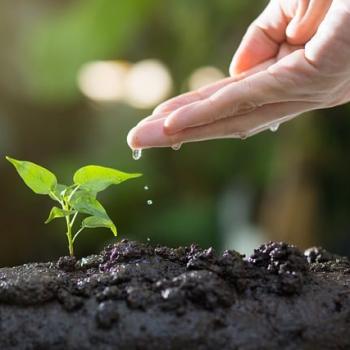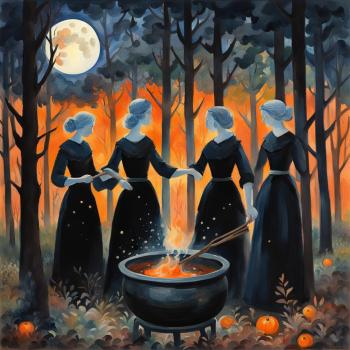When I think about growing up in rural Southwest Michigan, a lot of my memories are of times spent in the fields beside my home or tromping through the woods on our property. Summer days spent with a couple of neighbor kids, who lived across the street, picking wild black raspberries from vines growing in the dappled shade of black walnut and oak trees.
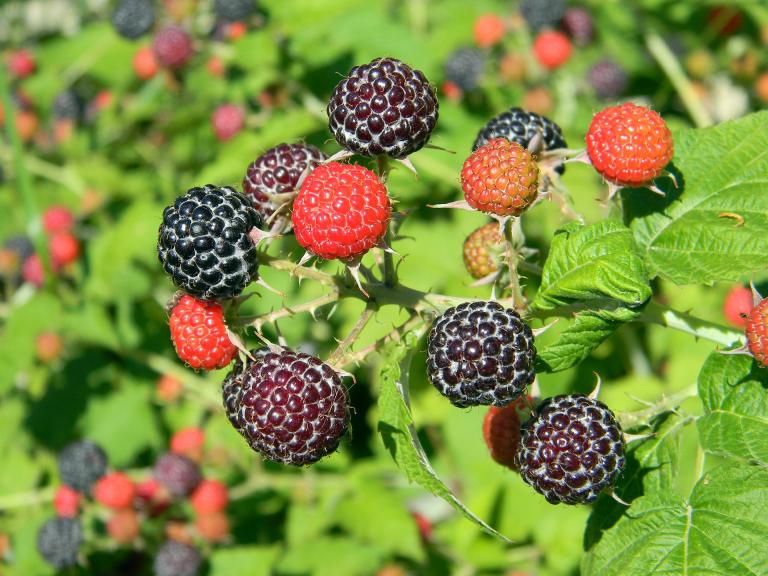
We’d be sprayed with bug repellent and change into jeans and sneakers before meeting at the end of my driveway with coffee cups, bowls, or paper lunch bags in hand. We’d cross into the tall grasses and wooded areas which lined our quiet country road on the hunt for our plunder.
We never had to go far in our wanderings and the thorn-filled leafy vines, heavy with fruit, were easy to find. We’d pick enough fruit to carry back to our homes even while popping a few juicy morsels into our mouths as a reward for our labors. Then we’d take our treasures home to wash and eat sprinkled with sugar or with a dish of vanilla ice cream. Sometimes we’d even share the berries with the rest of our families.
My friends and I did not know what we were doing was called wildcrafting or foraging.
Wildcrafting is harvesting from plants in their natural or wild habitats to be used for food or medicinal purposes. These plants are not cultivated as you would find in a garden or on a farm but grow on their own in nature.
My family and I were fortunate that our house resided on five acres of land rich with apples, wild plums, pears, mulberries and black raspberries from which we could forage. I can remember years when the apples were so plentiful my mother would prepare and can enough applesauce to last a year. The black raspberries were my favorite to pick but I remember gathering wild pears to snack on as I traversed the woods. One year, my grandfather picked enough plums to be made into several quarts of jam. We took what we needed while leaving behind plenty of produce for the wildlife and so the plants would continue to flourish.
There are many good reasons to wildcraft from nature. People gather fruit, nut, leaf, root, and berry for food, medicine, and as in my case – witchcraft. However, it is very important to respect the land and ecosystem within which the plant, bush, or tree exists and know the do’s and don’ts of wildcrafting. Here are tips from an excellent article from Sierra Botanica – Safe and Ethical Guidelines for Wildcrafting if you decide to go wildcrafting in your local area:
- Follow the abundance of your local landscape. This book is helpful if you’re not sure which plants are safe or edible.
- Avoid picking unusual, threatened and endangered plants.
- Gather what you need and leave the rest.
- Know where and where not to harvest (don’t trespass on private or government property)
These are important, basic rules to follow when wildcrafting. However, you may be able to find plants to forage by taking a closer look at your own yard. People spray their lawns or property with chemicals to discourage “weeds” or “invasive plants” but do so without understanding the wonderful plant sources which could be available to them and within easy reach. Uncultivated plants brimming with nutritional, medicinal, and magickal value.
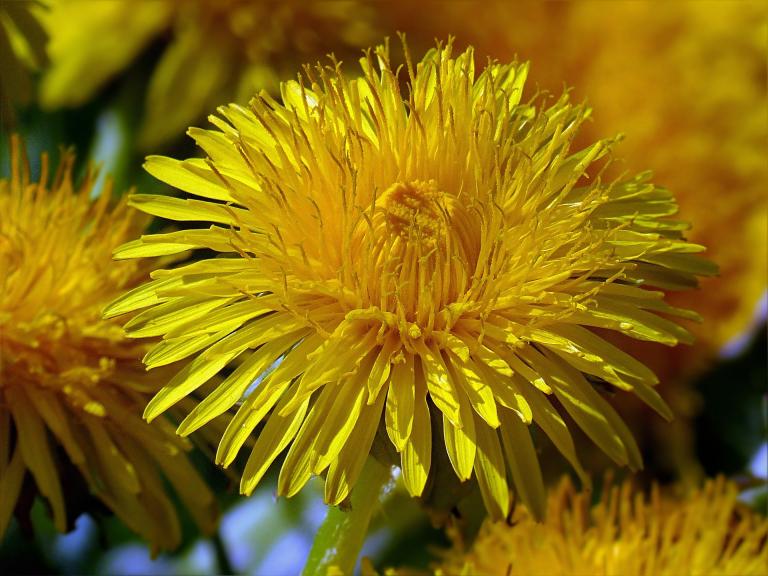
Let me give you an example of a plant you can harvest with ease without even having to leave your home space: Dandelions. And unless you’ve sprayed weed killer in the desire for an immaculate lawn, this delightful (some say bothersome but what do they know) plant will grow in your yard or garden area.
Dandelions are a flowering plant which grows with abundance in many places around the world. They are a stubborn flower, which is why most people consider them weeds, but they are a plant which is edible from root to blossom. Here are a few reasons why you should love the dandelions growing dotting your lawn:
- Dandelions have a high nutrient value.
- Dandelions are high in vitamins, minerals, antioxidants and fiber.
- Dandelions can be eaten cooked as greens or raw in salads. They can be made into jelly, syrups, cookies, teas, coffee, and wine.
- Dandelions have medicinal uses and can be prepared as a tincture, decoction, tea, and salve.
In fact, if you have a bunch of dandelions and are not sure what to do with them, I recommend these 16 Dandelion Recipes. I also recommend reading this article, 13 Potential Health Benefits of Dandelion, to learn how this plant can benefit your life. And if you want to try dandelion without the work of harvesting and preparation, Dandelion Leaf & Root Tea from Traditional Medicinals (it’s great for flushing the kidneys and promotes healthy digestion) is a great start.
Here’s a caveat: Allow me to stress that before you harvest dandelions, or any wild plant, be sure the area where you pick has not been sprayed with chemicals or herbicides. For this reason, I prefer to stick to my own yard when wildcrafting. Also, if you have an allergy to ragweed, you may want to steer clear of dandelion.
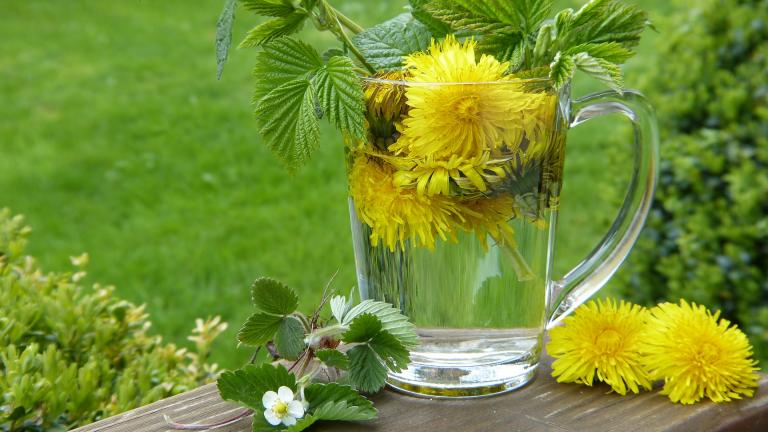
Now, let’s see about using Dandelion in magickal workings:
- The plant is associated with any solar deity, Hecate, Brighid and Belenos. A tea can be made of the blossoms and leaves to increase psychic ability.
- The roots can be used to make a tea which will aid invoking of spirits.
- Wishes can be made while blowing the seeds of the dandelion from the head of the flower.
- The flowers can be used for inspiration spells in Spring time or to break a creative block.
- Can be used in offerings to woodland or land spirits.
- Dandelion derives from the French word dent-de-lion or tooth of the lion. This makes the flower excellent in spell bags for confidence and courage.
- Use them as decoration for your Spring altar or Beltane rituals. Wear the blossoms in your hair for a handfasting (which is what I did) which occur during the Spring or Summer.
- Are good for driving out negative energy from your home.
Hopefully, you can see the value in taking a second look at your yard or back garden to see the plant allies which may exist or volunteer if given the opportunity to grow. Other valuable “weeds” you may find include Common Blue Violets, Purslane, Chickweed, Sorrel and Plantain (all delightful in their own way and edible). These plants will have growing seasons, some long and some short, so pay attention to what is available throughout the Spring, Summer, and Autumn. In temperate locals, there may be plants you can harvest during Winter as well.
Keep an eye out for wild edible fruits, mushrooms, and other produce but I must stress again – Be Careful! Take a course, read good books, or use a helpful and well-rated app which allows you to identify what are safe, edible plants to harvest and which are not. And if your lawn does not provide the plants you desire go forth and wildcraft while doing so in an ethical and safe manner. Above all, enjoy being in nature and remember to thank the Earth Mother for all she provides, as well as the plant allies which present themselves to you.
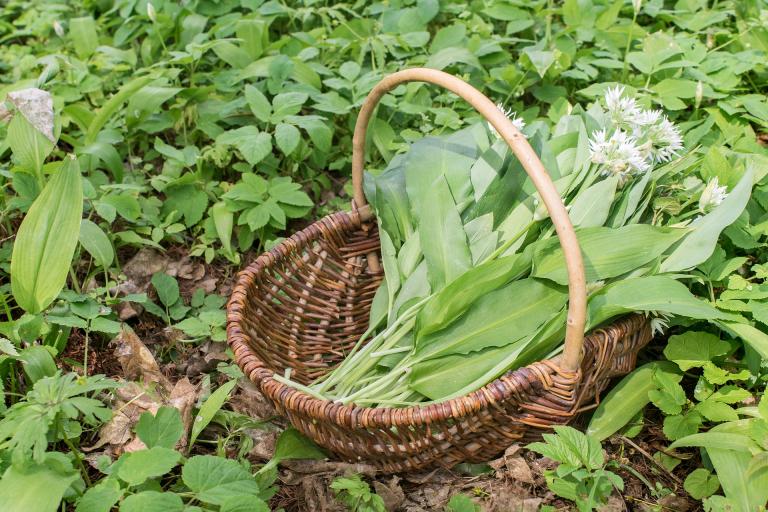
Gwyn’s Dandelion Salve
This is a quick method for making Dandelion Salve which can be used to give relief to aching joints, sore muscles and dry skin.
Items Needed:
A clean pot filled with a cup or two of water.
A clean mason jar with lid and small storage jar with a lid.
Non-hydrogenated coconut oil
A Strainer
A couple of measuring pitchers (4 cup) or bowls with pouring spout.
Several squares of cheesecloth and/or coffee filters
Dandelion blossoms
Note: This is a salve I made after picking dandelions from my yard. You can use fresh or even frozen dandelions. However, they do retain a lot of water which can create a sediment or make the oil thick. If you use fresh or frozen dandelions, you will want to strain the oil three or four times through the cheesecloth and/or coffee filter. Also, as you go through the process, focus your intention for this salve as one which will heal and soothe.
- Put the pan of water on the stove and heat over a low to medium setting.
- While the water heats, fill the glass mason jar about ½ to ¾ full of dandelions.
- Scoop several large spoonfuls of non-hydrogenated coconut oil into the jar on top of the dandelions.
- Place the jar with dandelions and non-hydrogenated oil into the pan of water. Allow the oil to melt over the dandelions. Take a spoon and gently stir the dandelions to allow the oil to saturate the blossoms until the melted oil covers the blossoms by about a ¼ to ½ inch. If you need to add more oil that’s fine.
- Place the lid on the mason jar and tighten, then pick up the jar (be careful, use a towel or something to protect your hands) and rotate the jar so that the dandelions and oil are mixed and the oil still covers all the blossoms by a ¼ to ½.
- Remove the lid and place the jar back in the water over low heat for about 10 minutes. Then turn off the heat and let the jar sit in the water for another 10 minutes. Remove and let cool.
- Place several layers of cheesecloth into the strainer and place over the glass measuring pitcher/bowl. Slowly pour the dandelions and oil onto the cheesecloth, allowing it to strain into the pitcher/bowl. When the oil has strained through, pick up the edges of the cheesecloth and squeeze as much of the oil from the dandelion blossoms as you can then discard the dandelions and cheesecloth.
- Place several more layers of cheesecloth in the strainer and slowly pour the oil through the strainer into another glass receptacle. You can use the coffee filters for this as well.
- Repeat this process several times until the oil is as clear and golden as possible.
- Pour the dandelion oil into the small glass jar. You can add some additional essential oil such as Copaiba (about 30 drops). Place the lid on the jar, label the oil with date and store in a cool dark place.
The oil should solidify overnight to create the salve. Test on wrist for sensitivity before using. Do not use if you have a known ragweed allergy.







